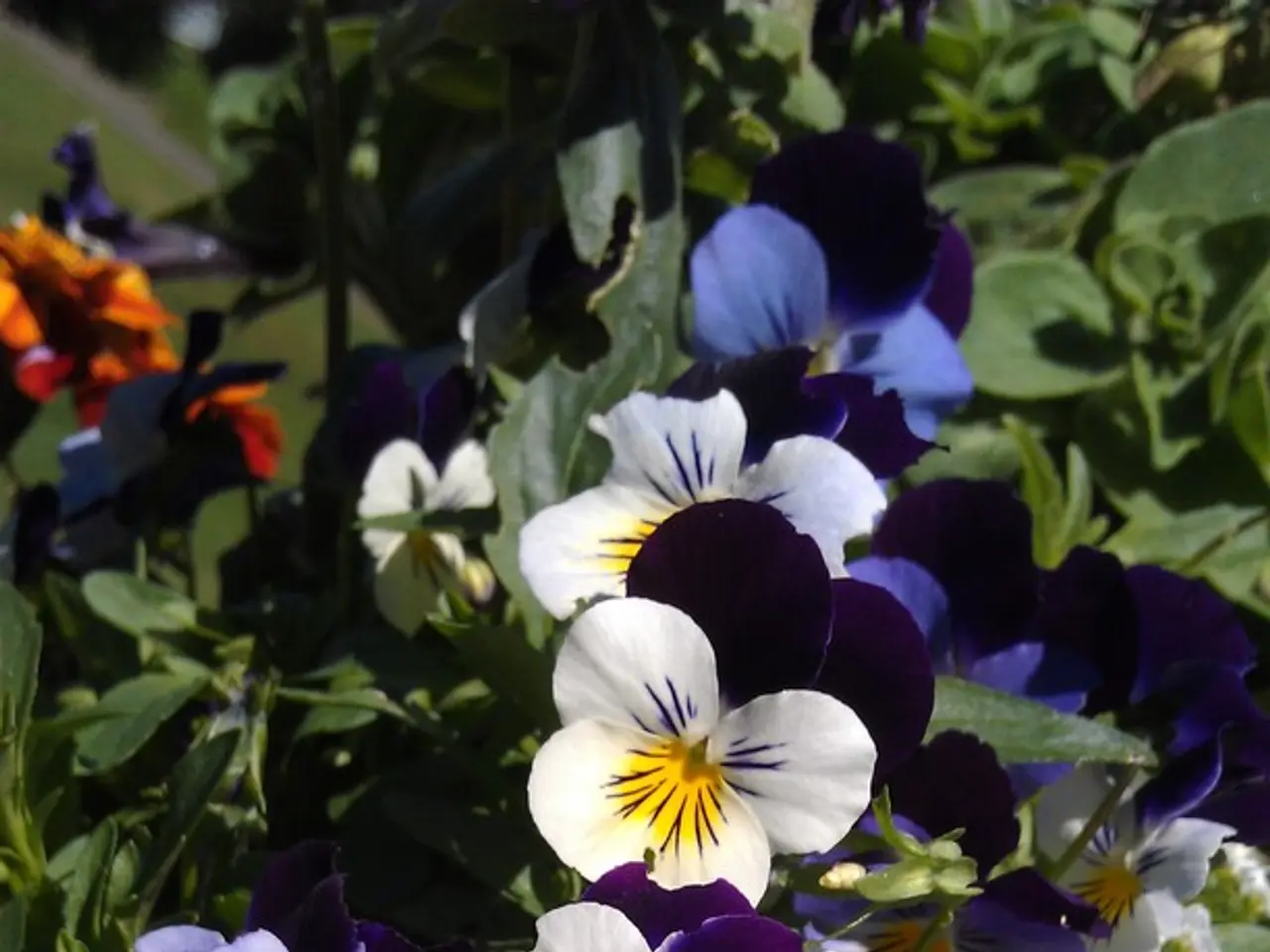Top 10 Perennials Thriving after Autumn Sowing
Autumn is an ideal time for garden enthusiasts to prepare their gardens for a colourful spring display. By choosing the right perennials and planting them in the fall, gardeners can ensure strong root growth, vibrant blooms, and resilient plants.
Perennials such as Japanese Anemone, Turtlehead, Russian Sage, Chrysanthemums, Autumn Crocus, and Floribunda Roses are favourites for fall planting. These perennials either bloom in the fall or establish well in cooler soil conditions, leading to healthier growth and blooms the following spring.
**Japanese Anemone** is known for its elegant, airy blooms above lush foliage, providing graceful late-season color. **Turtlehead** blooms from August through October, is deer-resistant, attracts hummingbirds, and thrives in moist, shady spots. **Russian Sage (Salvia yangii)** blooms from midsummer into fall, with lavender-blue flowers; it thrives in full sun and dry, well-draining soils, and is deer-resistant. **Chrysanthemums** are classic fall bloomers available in many colors, thriving in rich, moist soil with plenty of sun. **Autumn Crocus** blooms in early fall with pink, lavender, or white flowers; it is planted late summer and blooms the next fall. **Floribunda Roses** provide striking clusters of blooms lasting into fall and do well with a balanced fertilizer and well-drained, acidic soil.
The benefits of planting perennials in the fall are numerous. The soil temperature is still warm enough to encourage root growth before winter, helping plants establish strong root systems. Cooler air temperatures reduce stress on plants, allowing energy to focus on root development rather than fighting heat. Fall often brings increased rainfall and higher soil moisture, which supports good root establishment. Established roots in fall allow perennials to emerge vigorously in spring with abundant blooms.
Coneflowers, Mini Daffodils, Crown Imperials, Black-Eyed Susans, Schubertii Allium, Parrot Tulips, Shasta Daisies, and Coral Bells are other perennials that benefit from fall planting. Each of these perennials has unique characteristics and care requirements, but they all share the advantage of establishing strong roots in the cooler soil conditions of fall.
For instance, Planting Crown Imperials in fall gives them ample time to establish their roots before winter, ensuring they are ready to bloom in late spring with striking clusters of bell-shaped flowers in shades of red, orange, and yellow. Similarly, Planting Parrot Tulips in the fall ensures they have enough time to establish their roots before winter, resulting in spectacular blooms in spring with flamboyant, fringed petals in vibrant colors such as red, yellow, and orange.
To care for Hellebores in the fall, ensure the soil remains moist but not waterlogged, and add a layer of mulch to help retain moisture and protect the roots. Hellebore is a perennial that blooms early in winter to early spring, known for its cup-shaped flowers in various colors.
When planting Shasta Daisy, ensure the crown (where the stem meets the roots) is at soil level. Planting too deep can hinder their growth. Space the Shasta Daisy plants about 1 to 2 feet apart to allow for adequate air circulation and to reduce the risk of fungal diseases. Adding a slow-release, balanced fertilizer during planting can provide essential nutrients for Black-Eyed Susans.
Russian Sage is known for its tall, airy spikes of blue flowers and silvery-gray foliage, blooming from late summer to early fall. Plant Russian Sage in well-drained soil with full sun exposure and water thoroughly after planting to help settle the soil and eliminate air pockets around the roots.
Fall planting allows Coral Bells to withstand the colder months. Known for their vibrant foliage, which comes in various shades of green, purple, and silver, Coral Bells are prized for their colour and texture.
In summary, planting perennials such as Japanese anemone, turtlehead, Russian sage, chrysanthemums, and autumn crocus in the fall ensures they develop strong roots and thrive with vibrant blooms due to favorable soil temperatures, moisture, and reduced heat stress during this season. By choosing the right perennials and providing them with the right care, gardeners can enjoy a stunning display of flowers in the spring.
Planting perennials like Japanese Anemone, Turtlehead, Russian Sage, Chrysanthemums, and Autumn Crocus during autumn allows these plants to establish strong roots in the cooler soil conditions, resulting in vibrant blooms in the coming spring. Furthermore, incorporating home-and-garden favorites such as Shasta Daisies, Hellebores, and Coral Bells into your lifestyle by planting them in the fall, ensures a captivating home-and-garden display in the spring.




